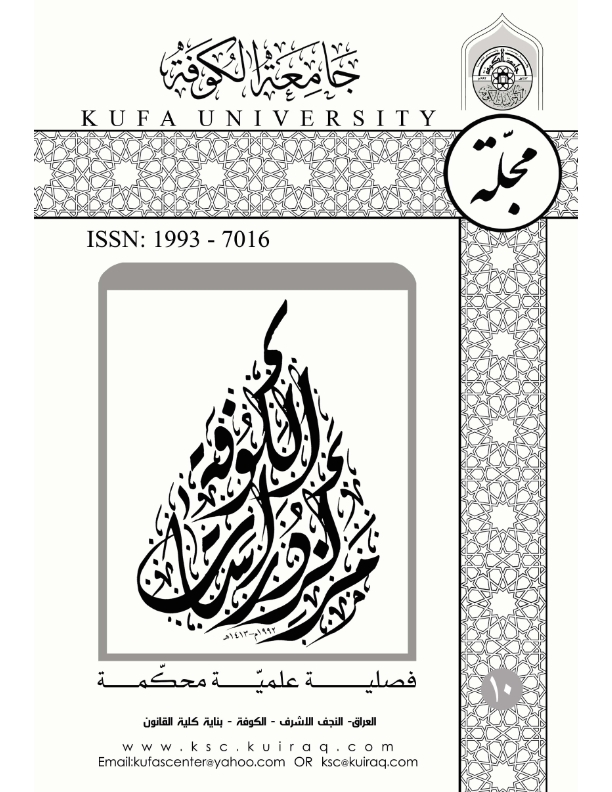التموين الغذائي للجند وأثره على حركة الفتوحات الاسلامية خلال العصر الاموي جبهة المشرق
DOI:
https://doi.org/10.36322/jksc.v1i10.4772Abstract
رابعا البحث الموسوم بـ(التموين الغذائي للجند وأثرهُ على حركة الفتوحات الإسلامية خلال العصر الأموي-جبهة المشرق) للمدرس الدكتور مشتاق بشير الغزالي، وقد اشتمل على مقدمة وثلاث فقرات، استعرض الباحث في المقدمة حركة الجيش الإسلامي والفتوحات، وتناول في الفقرة الأولى بناء القواعد الساندة للجيوش، إذ استحدث نوعان من القواعد الساندة، وهما القواعد الدائمية و القواعد المؤقتة، وعرض الباحث في الفقرة الثانية لأساليب جديدة في التموين، إذ تم استحداث مؤسسات نصف عسكرية تأخذ على عاتقها إعاشة المقاتلين أطلق عليها (الربط)، وتناول في الفقرة الثالثة تنظيم حركة الجيش بما يؤمن استمرارية المؤن للجند، وقد توصل الباحث الى أن التموين الغذائي للجند كان له الأثر البالغ على حركة الفتوحات الإسلامية.The Islamic conquests had been culminate during Al-Amawy period, So Al-Islam extended yetit reached so for . Although, the great problems that they combined with Al-Rassidy and Al-Amawy periods that resulted to seizue the caliphate by Al-Amawy Family . But Al-Amawy center donot be more far as it was in Arabia . It was stayed in Arabia during Al-Amawy period , and it was agood setat the middle of Islamic state .
The impotant of center, The capital, is consider as the source of the discussions and instructions and also to lead the movement of conquests, and the center to direct the supplies by increasing numbers and materials.
So the supply of Food always have the essential rolein succeeding of the movement of conquests . And the Islamic troops did not be capable to reach Far with out an arrange meekanism that the supplies of food for the soldiers depend on .
Downloads
Downloads
Published
How to Cite
Issue
Section
License
Copyright (c) 2022 مركز دراسات الكوفة

This work is licensed under a Creative Commons Attribution 4.0 International License.
Permit others to distribute and copy the manuscript, to create extracts, abstracts, and other revised versions, adaptations, or derivative works of or from the manuscript (such as a translation), to include in a collective work, to text or data mine the article, even for commercial purposes, as long as they credit the author(s), do not represent the author as endorsing their adaptation of the article, and do not modify the article in such a way as to damage the author''''s honor or reputation. Further details are found at Creative Commons Attribution 4.0 International (CC BY 4.0)






























